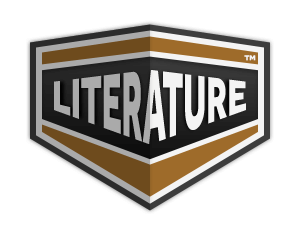A Yellow Dog
"A Yellow Dog" is a short story by Bret Harte, set in the American West during the Gold Rush era. It explores themes of loyalty, reputation, and the complexities of human relationships. The narrative centers around a yellow dog that becomes a symbol of companionship and fidelity, reflecting the characters' struggles and moral dilemmas. Harte's distinctive prose captures the quirks of frontier life and the interplay between humor and pathos, making it a poignant examination of the human condition against the backdrop of a rugged landscape.
I never knew why in the Western States of America a yellow dog should be proverbially considered the acme of canine degradation and incompetency, nor why the possession of one should seriously affect the social standing of its possessor. But the fact being established, I think we accepted it at Rattlers Ridge without question. The matter of ownership was more difficult to settle; and although the dog I have in my mind at the present writing attached himself impartially and equally to everyone in camp, no one ventured to exclusively claim him; while, after the perpetration of any canine atrocity, everybody repudiated him with indecent haste. "Well, I can swear he hasn't been near our shanty for weeks," or the retort, "He was last seen comin' out of YOUR cabin," expressed the eagerness with which Rattlers Ridge washed its hands of any responsibility. Yet he was by no means a common dog, nor even an unhandsome dog; and it was a singular fact that his severest critics vied with each other in narrating instances of his sagacity, insight, and agility which they themselves had witnessed. He had been seen crossing the "flume" that spanned Grizzly Canyon at a height of nine hundred feet, on a plank six inches wide. He had tumbled down the "shoot" to the South Fork, a thousand feet below, and was found sitting on the riverbank "without a scratch, 'cept that he was lazily givin' himself with his off hind paw." He had been forgotten in a snowdrift on a Sierran shelf, and had come home in the early spring with the conceited complacency of an Alpine traveler and a plumpness alleged to have been the result of an exclusive diet of buried mail bags and their contents. He was generally believed to read the advance election posters, and disappear a day or two before the candidates and the brass band--which he hated--came to the Ridge. He was suspected of having overlooked Colonel Johnson's hand at poker, and of having conveyed to the Colonel's adversary, by a succession of barks, the danger of betting against four kings. While these statements were supplied by wholly unsupported witnesses, it was a very human weakness of Rattlers Ridge that the responsibility of corroboration was passed to the dog himself, and HE was looked upon as a consummate liar. "Snoopin' round yere, and CALLIN' yourself a poker sharp, are ye! Scoot, you yaller pizin!" was a common adjuration whenever the unfortunate animal intruded upon a card party. "Ef thar was a spark, an ATOM of truth in THAT DOG, I'd believe my own eyes that I saw him sittin' up and trying to magnetize a jay bird off a tree. But wot are ye goin' to do with a yaller equivocator like that?" I have said that he was yellow--or, to use the ordinary expression, "yaller." Indeed, I am inclined to believe that much of the ignominy attached to the epithet lay in this favorite pronunciation. Men who habitually spoke of a "YELLOW bird," a "YELLOW-hammer," a "YELLOW leaf," always alluded to him as a "YALLER dog." He certainly WAS yellow. After a bath--usually compulsory--he presented a decided gamboge streak down his back, from the top of his forehead to the stump of his tail, fading in his sides and flank to a delicate straw color. His breast, legs, and feet--when not reddened by "slumgullion," in which he was fond of wading--were white. A few attempts at ornamental decoration from the India-ink pot of the storekeeper failed, partly through the yellow dog's excessive agility, which would never give the paint time to dry on him, and partly through his success in transferring his markings to the trousers and blankets of the camp. The size and shape of his tail--which had been cut off before his introduction to Rattlers Ridge--were favorite sources of speculation to the miners, as determining both his breed and his moral responsibility in coming into camp in that defective condition. There was a general opinion that he couldn't have looked worse with a tail, and its removal was therefore a gratuitous effrontery. His best feature was his eyes, which were a lustrous Vandyke brown, and sparkling with intelligence; but here again he suffered from evolution through environment, and their original trustful openness was marred by the experience of watching for flying stones, sods, and passing kicks from the rear, so that the pupils were continually reverting to the outer angle of the eyelid. Nevertheless, none of these characteristics decided the vexed question of his BREED. His speed and scent pointed to a "hound," and it is related that on one occasion he was laid on the trail of a wildcat with such success that he followed it apparently out of the State, returning at the end of two weeks footsore, but blandly contented. Attaching himself to a prospecting party, he was sent under the same belief, "into the brush" to drive off a bear, who was supposed to be haunting the campfire. He returned in a few minutes WITH the bear, DRIVING IT INTO the unarmed circle and scattering the whole party. After this the theory of his being a hunting dog was abandoned. Yet it was said--on the usual uncorroborated evidence--that he had "put up" a quail; and his qualities as a retriever were for a long time accepted, until, during a shooting expedition for wild ducks, it was discovered that the one he had brought back had never been shot, and the party were obliged to compound damages with an adjacent settler. His fondness for paddling in the ditches and "slumgullion" at one time suggested a water spaniel. He could swim, and would occasionally bring out of the river sticks and pieces of bark that had been thrown in; but as HE always had to be thrown in with them, and was a good-sized dog, his aquatic reputation faded also. He remained simply "a yaller dog." What more could be said? His actual name was "Bones"--given to him, no doubt, through the provincial custom of confounding the occupation of the individual with his quality, for which it was pointed out precedent could be found in some old English family names. But if Bones generally exhibited no preference for any particular individual in camp, he always made an exception in favor of drunkards. Even an ordinary roistering bacchanalian party brought him out from under a tree or a shed in the keenest satisfaction. He would accompany them through the long straggling street of the settlement, barking his delight at every step or misstep of the revelers, and exhibiting none of that mistrust of eye which marked his attendance upon the sane and the respectable. He accepted even their uncouth play without a snarl or a yelp, hypocritically pretending even to like it; and I conscientiously believe would have allowed a tin can to be attached to his tail if the hand that tied it on were only unsteady, and the voice that bade him "lie still" were husky with liquor. He would "see" the party cheerfully
Translation
Translate and read this book in other languages:
Select another language:
- - Select -
- 简体中文 (Chinese - Simplified)
- 繁體中文 (Chinese - Traditional)
- Español (Spanish)
- Esperanto (Esperanto)
- 日本語 (Japanese)
- Português (Portuguese)
- Deutsch (German)
- العربية (Arabic)
- Français (French)
- Русский (Russian)
- ಕನ್ನಡ (Kannada)
- 한국어 (Korean)
- עברית (Hebrew)
- Gaeilge (Irish)
- Українська (Ukrainian)
- اردو (Urdu)
- Magyar (Hungarian)
- मानक हिन्दी (Hindi)
- Indonesia (Indonesian)
- Italiano (Italian)
- தமிழ் (Tamil)
- Türkçe (Turkish)
- తెలుగు (Telugu)
- ภาษาไทย (Thai)
- Tiếng Việt (Vietnamese)
- Čeština (Czech)
- Polski (Polish)
- Bahasa Indonesia (Indonesian)
- Românește (Romanian)
- Nederlands (Dutch)
- Ελληνικά (Greek)
- Latinum (Latin)
- Svenska (Swedish)
- Dansk (Danish)
- Suomi (Finnish)
- فارسی (Persian)
- ייִדיש (Yiddish)
- հայերեն (Armenian)
- Norsk (Norwegian)
- English (English)
Citation
Use the citation below to add this book to your bibliography:
Style:MLAChicagoAPA
"A Yellow Dog Books." Literature.com. STANDS4 LLC, 2025. Web. 22 Feb. 2025. <https://www.literature.com/book/a_yellow_dog_4479>.








Discuss this A Yellow Dog book with the community:
Report Comment
We're doing our best to make sure our content is useful, accurate and safe.
If by any chance you spot an inappropriate comment while navigating through our website please use this form to let us know, and we'll take care of it shortly.
Attachment
You need to be logged in to favorite.
Log In